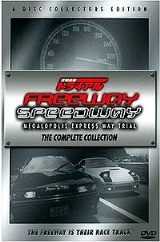
Shuto Kousoku Trial
Encyclopedia
is the original title of a series of six Japanese films, about illegal highway racing in the Shuto Expressway
, released between 1988 and 1996. An English subtitled version of the films series -renamed Freeway Speedway- was released on DVD in North America in 2004 due to commercial success of popular Hollywood films like The Fast and The Furious
("before there was The Fast And The Furious, there was Freeway Speedway" is a quote appearing on the fourth DVD). A 4-disc re-release of the 2004 edition was made available in 2007, it was renamed Tokyo Speedway: The Complete Collection. Though also available in Hong Kong
, the DVD edition was not released in Japan since the series is still banned and the last episode unreleased yet.
, when the Mid Night Club
ruled the scene and became one of the most infamous and feared or "respected" car clubs in Japan. Before they were banned from doing so, car magazines freely covered illegal races, but in the mid 1990s, Western media started to report about the Bōsōzoku
and in the 2000s a popular American street racing video game series was named after them, as Midnight Club
.
The first film, produced by Nikkatsu
, was banned
from release in Japan in cinema, due to its content. When racing driver and former street racer
Keiichi Tsuchiya
came on hand from the first sequel, it had adopted an anti street racing message, therefore avoiding a ban. The series became a semi biographical piece about him, partially about his experience as a hashiriya (native term for "street racer") and that when he quit to go professional racing.
The series following the first film, were released under the Toei Company's
V-Cinema
line, meaning that they were all released direct-to-video
. These films are believed to have influenced popular franchises including local video games Zero4 Champ series
and Shutokō Battle series (the name "shutokō battle" is a dialogue line in the fourth film) as well as comic books like Wangan Midnight
and Initial D
.
It was also a source of inspiration for Hong Kong cinema's Legend of Speed and western video games like the Midnight Club
series as well Hollywood films such as The Fast and the Furious
.
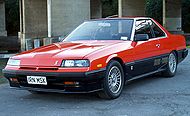
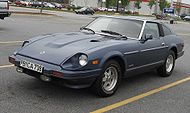 Street racers challenge each other to exceed the current speed record held by the F1 racer. However, in order to break the record of the Shuto Expressway, you need to have "luck" in addition to a high-powered street-machine and driving technique. And you must be able to conquer "Devil's Curve". Racers bet their dreams and their lives against one another in a dangerous game of speed. The 1st movie of the series and the only one which involves Police car chase.
Street racers challenge each other to exceed the current speed record held by the F1 racer. However, in order to break the record of the Shuto Expressway, you need to have "luck" in addition to a high-powered street-machine and driving technique. And you must be able to conquer "Devil's Curve". Racers bet their dreams and their lives against one another in a dangerous game of speed. The 1st movie of the series and the only one which involves Police car chase.
This movie was banned from Japanese theaters due to its message, nevertheless the series followed in video releases.

 Keiichi Tsuchiya (Skyline GT-R (R32)
Keiichi Tsuchiya (Skyline GT-R (R32)
) tests tyres on a race track. Yamanaka Taka (Silvia K's (S13)
) breaks the street course record of his friend Tashiro Junichi (Skyline RS-X (R30)
). Junichi has given up racing to get married. The villain Sawaki (Fairlady Z (Z32)
) challenges Taka to a race. Junichi intervenes, stopping Taka from accepting. Taka sees Keiichi outside a Nissan showroom and challenges him to a race. Keiichi says he no longer races on the street, and he will only challenge Taka on a track. Junichi later races Sawaki on condition that he leaves Taka alone. Junichi crashes and dies in this race. Junichi's fiancee had bought a Skyline GT-R (R32)
as a wedding present, and gives this to Taka, on condition he never street races again. Taka practises in the GT-R, receiving pointers from Keichii Tsuchiya. Breaking his promise to Junichi's fiancee he also races Sawaki, but during the race, having already dominated Sawaki, he decides racing is futile and doesn't bother to finish. The movie ends with the GT-Rs of Keiichi and Taka chasing each other around a race track. Takahiro, overtakes Tsuchiya, in the final corner of the race, with Nozomi, Junichu's widow, waving the checkered flag as they cross the finish line.
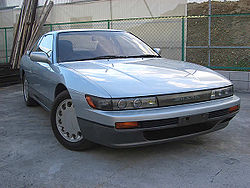
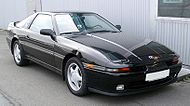 Former Megalopolis Express Freeway record holder Kyōsuke has retired from street racing and now belongs to a Keiichi Tsuchiya's racing team. One day while performing mountain time trials, a black Toyota Supra (JZA70)
Former Megalopolis Express Freeway record holder Kyōsuke has retired from street racing and now belongs to a Keiichi Tsuchiya's racing team. One day while performing mountain time trials, a black Toyota Supra (JZA70)
hiding inside a tunnel comes from behind and challenges Yūsuke (S13) to a race, but Yūsuke is no match for the unknown Black Supra. Kyōsuke is still haunted by that devastating crash that occurred on the Expressway a few years ago, which caused him to leave street racing. One day while releasing his anger in the snowy mountains, he and Tsuchiya witnessed an accident resulting Tsuchiya (R32) racing down the snowy mountains to get help. After witnessing this, Kyōsuke asked Yūsuke to quit street racing in which the later replied that beating his record was the only thing for him. When Kyōsuke hears his old rival, Yūsuke has crashed on the freeway while racing the unknown Supra, permanently blinding himself in the process, Kyōsuke (R32) returns to the Megalopolis Express Freeway for one last street race to avenge Yūsuke.
Towards the end of the race against black Supra, Kyōsuke learn that the casualty in the accident at beginning was the sister of the Supra driver and pulls out from the race. Kyōsuke waited for the Black Supra and vowed never to races on the streets again, so did the black Supra. After Kyōsuke went back to the racing garage, someone gave him a racing helmet, in which was the intention of Tsuchiya. Last scene showing Kyōsuke in number 82 Formula 3000
car getting 6th in his debut to the pro racing scene.
approx. time is 1 hour
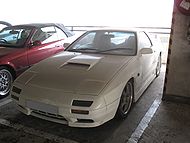 A boy named Kenichi, has been diagnosed with terminal cancer. His most favorite car is the Skyline GT-R (BNR32). His only wish, was to become a professional driver, like his idol Keiichi Tsuchiya. His older brother sells not only his car (Silvia K's (S13)), but also his father's car as well, in order to buy a Red GT-R (BNR32). The elder brother chose to race on the streets because he knows his Kenichi won't be able to see it by the time he went pro. One day while visiting the tracks, the little boy happened to bump into Tsuchiya and was taken for a ride. As the younger brother's condition becomes worse, and on his deathbed, he makes his older brother promise to become a professional driver, and to beat Tsuchiya in a race. During the movie, several side racing action evolves, including a white RX-7 (FC3S)
A boy named Kenichi, has been diagnosed with terminal cancer. His most favorite car is the Skyline GT-R (BNR32). His only wish, was to become a professional driver, like his idol Keiichi Tsuchiya. His older brother sells not only his car (Silvia K's (S13)), but also his father's car as well, in order to buy a Red GT-R (BNR32). The elder brother chose to race on the streets because he knows his Kenichi won't be able to see it by the time he went pro. One day while visiting the tracks, the little boy happened to bump into Tsuchiya and was taken for a ride. As the younger brother's condition becomes worse, and on his deathbed, he makes his older brother promise to become a professional driver, and to beat Tsuchiya in a race. During the movie, several side racing action evolves, including a white RX-7 (FC3S)
versus a yellow 180SX (RS13)
, as well as the black Supra Twin Turbo R (JZA70)
, which was beaten by the red GT-R (BNR32) by a margin in the 0-400m (Zero-Yon) street drag race, and making the latest tuning magazine cover. The white RX-7 (FC3S) later asked whether he was refused by Takahiro Yamanaka to race on the streets and challenged the Red GT-R (BNR32) to race on Shuto Expressway, saying 0-400m are for kids, asking him to create their own legend. Later the two crashed and ended up in the hospital. Takahiro Yamanaka, from part 2, makes a special guest appearance, as the mechanic who tunes the cars for the final race, and as the trainer to the older brother, preparing him for the upcoming battle against Tsuchiya on the race track.

) travels to Osaka to challenge Osaka Kanjō (loop) champion Sendō (JZA70 Supra
). Sendō crashes during the race, writing off his car, and ending up in hospital. The opening credits roll, featuring Osaka's Tsūtenkaku
. Tsuchiya Keiichi (NSX Type R
) tells his mechanic Kazuki (also Shikiba's friend) he must give up street racing. Kazuki asks Shikiba to race one last time. Two months pass. Sendō leaves hospital in his new JZA80 Supra
to find Shikiba in Tokyo. Shikiba has given up racing, and spends time looking at the wrecked shell of Kazuki's R33 GT-R
. It transpires that Kazuki died during their final race. Sendo finds Shikiba, but Shikiba will not race him, giving him an Akira Sudō ticket as compensation. Akira Sudō's performances are intercut with some of the races/dialogues. Shikiba accepts a final challenge from a Nissan Z32 driver who has also just got out of hospital. When Shikiba passes the spot where Kazuki died he cannot finish the race, and drives to look at Kazuki's GT-R again. He finds Tsuchiya there, who criticises him strongly, and challenges him to race on the track. He races but is no match for Tsuchiya. Tsuchiya tells him street racing is useless, and if he can't make it on the track, he's unfit for the wheel. Shikiba takes to the tōge in anger, and spins. Flashback to Kazuki's death. Shikiba finally returns home two days after the race to find Sendo staying with his sister. They have a fist fight, Shikiba leaves. Flashback showing that Shikiba's R33 GT-R was originally Kazuki's, Shikiba (SW20 MR2
) won it from him in a race on their first meeting. Kazuki was so impressed that he asked Shikiba to help him create a legend using the GT-R, defeating all champions on roads across Japan, then moving into professional circuit racing, with Kazuki as the tuner. Flashback ends. Kazuki's bereaved girlfriend Kaoru harasses Shikiba on the docks. Meanwhile Sendō challenges and defeats the new 300ZX Shuto Kōsoku champion. Tsuchiya and Shikiba's sister independently tell Kaoru that Kazuki's dreams are still important. Kaoru finds Shikiba moping near Kazuki's GT-R and calls him a coward for giving up on Kazuki's dream. She gives him the tuned ROM Kazuki was working on before his death. Shikiba says he will race the Shuto Kousoku one more time. He challenges Sendō. Shikiba and Kaoru prepare the GT-R. Sendo and Shikiba's sister prepare the Supra. During the race, Shikiba finds the car has less power. Eventually he realises the power band
has moved higher so adjusts his style and wins. Later he returns to the circuit to find Kaoru and Tsuchiya. While there, Tsuchiya offers Shikiba another race, but declines, saying that he has already raced him, and knows how it's like to race on the track. He then gives Kaoru the GT-R keys saying he will not give up on Kazuki's dream. The GT-R is Kazuki's dream, he feels it should be with Kaoru. Shikiba, is about to leave, but Tsuchiya challenges him for the last time. Sendō and Shikiba's sister turn up to watch, Shikiba's sister is now interested in Sendō. Tsuchiya lends Shikiba an NSX, and the movie ends with the NSXs drifting around each other, around the circuit. approx. time is 1.5 hours.
Shuto Expressway
is a network of toll expressways in the Greater Tokyo Area of Japan. It is operated and maintained by the .Most routes consist of elevated roadway above other roads or over water, and have many sharp curves which require caution to drive safely...
, released between 1988 and 1996. An English subtitled version of the films series -renamed Freeway Speedway- was released on DVD in North America in 2004 due to commercial success of popular Hollywood films like The Fast and The Furious
The Fast and the Furious (film series)
The Fast and the Furious is a series of action films that focuses on street racing and heists. Produced by Universal Studios, the series was established in 2001 with the eponymous first installment, which has since been followed by four sequels, and two short films that tie into the series...
("before there was The Fast And The Furious, there was Freeway Speedway" is a quote appearing on the fourth DVD). A 4-disc re-release of the 2004 edition was made available in 2007, it was renamed Tokyo Speedway: The Complete Collection. Though also available in Hong Kong
Hong Kong
Hong Kong is one of two Special Administrative Regions of the People's Republic of China , the other being Macau. A city-state situated on China's south coast and enclosed by the Pearl River Delta and South China Sea, it is renowned for its expansive skyline and deep natural harbour...
, the DVD edition was not released in Japan since the series is still banned and the last episode unreleased yet.
Background
Made during one of the most notorious eras of street racingStreet racing
Street racing is a form of unsanctioned and illegal motor racing which takes place on public roads. Street racing can either be spontaneous or well-planned and coordinated. Well coordinated races are planned in advance and often have people communicating via 2-way radio/citizens' band radio and...
, when the Mid Night Club
Mid Night Club
The was a Japanese street racing gang that hosted illegal top speed themed races on the Bayshore Route of the Shuto Expressway between Tokyo to Yokohama...
ruled the scene and became one of the most infamous and feared or "respected" car clubs in Japan. Before they were banned from doing so, car magazines freely covered illegal races, but in the mid 1990s, Western media started to report about the Bōsōzoku
Bosozoku
is a Japanese subculture associated with motorcycle clubs and gangs.-Traits and history:The word bōsōzoku is also applied to motorcycle gangs, who share an interest in modifications for motorcycles, such as removing the mufflers so that more noise is produced...
and in the 2000s a popular American street racing video game series was named after them, as Midnight Club
Midnight Club
Midnight Club is a series of racing video games developed by Rockstar San Diego and published by Rockstar Games. The games are similar to the Midtown Madness series previously developed by Angel Studios, focusing on competitive street racing in open world urban environments. Midnight Club however,...
.
The first film, produced by Nikkatsu
Nikkatsu
is a Japanese entertainment company well known for its film and television productions. It is Japan's oldest major movie studio. The name Nikkatsu is an abbreviation of Nippon Katsudō Shashin, literally "Japan Cinematograph Company".-History:...
, was banned
Banned films
For nearly the entire history of film production, certain films have been banned by film censorship or review organizations for political or moral reasons...
from release in Japan in cinema, due to its content. When racing driver and former street racer
Street racing
Street racing is a form of unsanctioned and illegal motor racing which takes place on public roads. Street racing can either be spontaneous or well-planned and coordinated. Well coordinated races are planned in advance and often have people communicating via 2-way radio/citizens' band radio and...
Keiichi Tsuchiya
Keiichi Tsuchiya
is a professional race car driver. He is also known as the "Drift King" for his nontraditional use of drifting in non-drifting racing events and his role in popularizing drifting as a motorsport...
came on hand from the first sequel, it had adopted an anti street racing message, therefore avoiding a ban. The series became a semi biographical piece about him, partially about his experience as a hashiriya (native term for "street racer") and that when he quit to go professional racing.
The series following the first film, were released under the Toei Company's
Toei Company
is a Japanese film, television production, and distribution corporation. Based in Tokyo, Toei owns and operates thirty-four movie theaters across Japan, a modest vertically-integrated studio system by the standards of the 1930s United States; operates studios at Tokyo and Kyoto; and is a...
V-Cinema
V-Cinema
Japanese is the direct-to-video industry that appeared in Japan in the 1980s. The term is a trademark of Toei Company but is widely used in the West to describe any Japanese direct-to-video release. In Japan the term used is...
line, meaning that they were all released direct-to-video
Direct-to-video
Direct-to-video is a term used to describe a film that has been released to the public on home video formats without being released in film theaters or broadcast on television...
. These films are believed to have influenced popular franchises including local video games Zero4 Champ series
Zero4 Champ series
Zero4 Champ series is a racing video game franchise created by Yutaka Kaminaga of Media Rings in 1991. Hudson Soft -now a member of Konami group- licensed it for Drift Champ, the latest episode planned by Work Jam, developed by Tamsoft and for a mobile phone game developed by Profire, both were...
and Shutokō Battle series (the name "shutokō battle" is a dialogue line in the fourth film) as well as comic books like Wangan Midnight
Wangan Midnight
is a Japanese manga series written and illustrated by Michiharu Kusunoki and serialized in Shogakukan's Big Comic Spirits since 1990, later in Kodansha's Young Magazine. In 1999, it won the Kodansha Manga Award for general manga....
and Initial D
Initial D
is a manga by Shuichi Shigeno which has been serialized in Kodansha's Young Magazine since 1995. It has been adapted into a long-running anime series by OB Planning, Studio Comet, Studio Gallop, Pastel, and A.C.G.T, and a live action film by Avex and Media Asia...
.
It was also a source of inspiration for Hong Kong cinema's Legend of Speed and western video games like the Midnight Club
Midnight Club
Midnight Club is a series of racing video games developed by Rockstar San Diego and published by Rockstar Games. The games are similar to the Midtown Madness series previously developed by Angel Studios, focusing on competitive street racing in open world urban environments. Midnight Club however,...
series as well Hollywood films such as The Fast and the Furious
The Fast and the Furious (2001 film)
The Fast and the Furious is a 2001 street racing action film starring Paul Walker, Vin Diesel, Michelle Rodriguez and Jordana Brewster. Directed by Rob Cohen, The Fast and the Furious was the first mainstream film to feature the Asian automotive import scene in North America. It is the first film...
.
Megalopolis Expressway Trial (1988)


This movie was banned from Japanese theaters due to its message, nevertheless the series followed in video releases.
Megalopolis Expressway Trial 2 (1990)


Nissan Skyline GT-R
The Nissan Skyline GT-R is a Japanese sports car based on the Nissan Skyline range.The first GT-Rs were produced from 1969–1973. After a 16 year hiatus since the KPGC110 in 1972, the GT-R name was revived in 1989 with the Skyline R32. This car was nicknamed "Godzilla" by the Australian motoring...
) tests tyres on a race track. Yamanaka Taka (Silvia K's (S13)
Nissan Silvia
The S12 was produced from 1984 to 1988, with revisions to the exterior trim in 1987 . It was sold in three configurations—a coupe , a hatchback, and a widebody chassis called grandprix .A number of different engines were equipped in the S12 chassis, depending on production year and more...
) breaks the street course record of his friend Tashiro Junichi (Skyline RS-X (R30)
Nissan Skyline
The first Skyline was introduced in April 1957, by the Prince Motor Company, and was marketed as a luxury car. It featured a 1.5 L GA-30 engine producing 44 kW @ 4400 rpm. It used a de Dion tube rear suspension and was capable of 140 km/h . The car weighed around 1300 kg...
). Junichi has given up racing to get married. The villain Sawaki (Fairlady Z (Z32)
Nissan 300ZX
The Z31 chassis designation was first introduced in 1983 as a 1984 Nissan/Datsun 300ZX in the US only. The 300ZX, as its predecessors, was known as a Nissan in other parts of the world. This continued in the US until 1985 model year when Nissan standardized their brand name worldwide and dropped...
) challenges Taka to a race. Junichi intervenes, stopping Taka from accepting. Taka sees Keiichi outside a Nissan showroom and challenges him to a race. Keiichi says he no longer races on the street, and he will only challenge Taka on a track. Junichi later races Sawaki on condition that he leaves Taka alone. Junichi crashes and dies in this race. Junichi's fiancee had bought a Skyline GT-R (R32)
Nissan Skyline GT-R
The Nissan Skyline GT-R is a Japanese sports car based on the Nissan Skyline range.The first GT-Rs were produced from 1969–1973. After a 16 year hiatus since the KPGC110 in 1972, the GT-R name was revived in 1989 with the Skyline R32. This car was nicknamed "Godzilla" by the Australian motoring...
as a wedding present, and gives this to Taka, on condition he never street races again. Taka practises in the GT-R, receiving pointers from Keichii Tsuchiya. Breaking his promise to Junichi's fiancee he also races Sawaki, but during the race, having already dominated Sawaki, he decides racing is futile and doesn't bother to finish. The movie ends with the GT-Rs of Keiichi and Taka chasing each other around a race track. Takahiro, overtakes Tsuchiya, in the final corner of the race, with Nozomi, Junichu's widow, waving the checkered flag as they cross the finish line.
- Opening theme: Me-ga subete (目がすべて) by Saori Saitō off her album Lady (1989).
- Ending theme: Naga-denwa no ballad (長電話のバラード) by Saori Saitō off her album Lady (1989).
Megalopolis Expressway Trial 3 (1991)


Toyota Supra
The Toyota Supra is a sports car/grand tourer that was produced by Toyota Motor Company from 1979 to 2002. The styling of the Toyota Supra was derived from the Toyota Celica, but it was both longer and wider. Starting in mid-1986, the Supra became its own model and was no longer based on the Celica...
hiding inside a tunnel comes from behind and challenges Yūsuke (S13) to a race, but Yūsuke is no match for the unknown Black Supra. Kyōsuke is still haunted by that devastating crash that occurred on the Expressway a few years ago, which caused him to leave street racing. One day while releasing his anger in the snowy mountains, he and Tsuchiya witnessed an accident resulting Tsuchiya (R32) racing down the snowy mountains to get help. After witnessing this, Kyōsuke asked Yūsuke to quit street racing in which the later replied that beating his record was the only thing for him. When Kyōsuke hears his old rival, Yūsuke has crashed on the freeway while racing the unknown Supra, permanently blinding himself in the process, Kyōsuke (R32) returns to the Megalopolis Express Freeway for one last street race to avenge Yūsuke.
Towards the end of the race against black Supra, Kyōsuke learn that the casualty in the accident at beginning was the sister of the Supra driver and pulls out from the race. Kyōsuke waited for the Black Supra and vowed never to races on the streets again, so did the black Supra. After Kyōsuke went back to the racing garage, someone gave him a racing helmet, in which was the intention of Tsuchiya. Last scene showing Kyōsuke in number 82 Formula 3000
Formula 3000
The Formula 3000 International Championship was a motor racing series created by the Fédération Internationale de l'Automobile in 1985 to become the final preparatory step for drivers hoping to enter the Formula One championship...
car getting 6th in his debut to the pro racing scene.
approx. time is 1 hour
Megalopolis Expressway Trial 4 (1992)

Mazda RX-7
Series 1 is commonly referred to as the "SA22C" from the first alphanumerics of the vehicle identification number. This series of RX-7 had exposed steel bumpers and a high-mounted indentation-located license plate, called by Werner Buhrer of Road & Track magazine a "Baroque depression."In 1980...
versus a yellow 180SX (RS13)
Nissan 180SX
The Nissan 180SX was a hatchback coupe based on the S13 chassis from the Nissan S platform, and sold in Japan; and in some other countries under the 200SX name....
, as well as the black Supra Twin Turbo R (JZA70)
Toyota Supra
The Toyota Supra is a sports car/grand tourer that was produced by Toyota Motor Company from 1979 to 2002. The styling of the Toyota Supra was derived from the Toyota Celica, but it was both longer and wider. Starting in mid-1986, the Supra became its own model and was no longer based on the Celica...
, which was beaten by the red GT-R (BNR32) by a margin in the 0-400m (Zero-Yon) street drag race, and making the latest tuning magazine cover. The white RX-7 (FC3S) later asked whether he was refused by Takahiro Yamanaka to race on the streets and challenged the Red GT-R (BNR32) to race on Shuto Expressway, saying 0-400m are for kids, asking him to create their own legend. Later the two crashed and ended up in the hospital. Takahiro Yamanaka, from part 2, makes a special guest appearance, as the mechanic who tunes the cars for the final race, and as the trainer to the older brother, preparing him for the upcoming battle against Tsuchiya on the race track.
Megalopolis Expressway Trial 5:Final Battle (1993)

Megalopolis Expressway Trial Max (1996)
Shuto Kōsoku champion Shikiba Tatsuya (R33 GT-RNissan Skyline
The first Skyline was introduced in April 1957, by the Prince Motor Company, and was marketed as a luxury car. It featured a 1.5 L GA-30 engine producing 44 kW @ 4400 rpm. It used a de Dion tube rear suspension and was capable of 140 km/h . The car weighed around 1300 kg...
) travels to Osaka to challenge Osaka Kanjō (loop) champion Sendō (JZA70 Supra
Toyota Supra
The Toyota Supra is a sports car/grand tourer that was produced by Toyota Motor Company from 1979 to 2002. The styling of the Toyota Supra was derived from the Toyota Celica, but it was both longer and wider. Starting in mid-1986, the Supra became its own model and was no longer based on the Celica...
). Sendō crashes during the race, writing off his car, and ending up in hospital. The opening credits roll, featuring Osaka's Tsūtenkaku
Tsutenkaku
, lit. "Tower Reaching Heaven", owned by Tsūtenkaku Kanko Co., Ltd. is a well-known landmark of Osaka, Japan and advertises Hitachi. It is located in the Shinsekai district of Naniwa-ku, Osaka....
. Tsuchiya Keiichi (NSX Type R
Honda NSX
The Honda NSX, or Acura NSX, is a sports car that was produced between 1990 and 2005 by the Japanese automaker Honda. It is equipped with a mid-engine, rear-wheel drive layout, powered by an all-aluminium V6 gasoline engine featuring Honda's Variable Valve Timing and Lift Electronic Control ...
) tells his mechanic Kazuki (also Shikiba's friend) he must give up street racing. Kazuki asks Shikiba to race one last time. Two months pass. Sendō leaves hospital in his new JZA80 Supra
Toyota Supra
The Toyota Supra is a sports car/grand tourer that was produced by Toyota Motor Company from 1979 to 2002. The styling of the Toyota Supra was derived from the Toyota Celica, but it was both longer and wider. Starting in mid-1986, the Supra became its own model and was no longer based on the Celica...
to find Shikiba in Tokyo. Shikiba has given up racing, and spends time looking at the wrecked shell of Kazuki's R33 GT-R
Nissan Skyline
The first Skyline was introduced in April 1957, by the Prince Motor Company, and was marketed as a luxury car. It featured a 1.5 L GA-30 engine producing 44 kW @ 4400 rpm. It used a de Dion tube rear suspension and was capable of 140 km/h . The car weighed around 1300 kg...
. It transpires that Kazuki died during their final race. Sendo finds Shikiba, but Shikiba will not race him, giving him an Akira Sudō ticket as compensation. Akira Sudō's performances are intercut with some of the races/dialogues. Shikiba accepts a final challenge from a Nissan Z32 driver who has also just got out of hospital. When Shikiba passes the spot where Kazuki died he cannot finish the race, and drives to look at Kazuki's GT-R again. He finds Tsuchiya there, who criticises him strongly, and challenges him to race on the track. He races but is no match for Tsuchiya. Tsuchiya tells him street racing is useless, and if he can't make it on the track, he's unfit for the wheel. Shikiba takes to the tōge in anger, and spins. Flashback to Kazuki's death. Shikiba finally returns home two days after the race to find Sendo staying with his sister. They have a fist fight, Shikiba leaves. Flashback showing that Shikiba's R33 GT-R was originally Kazuki's, Shikiba (SW20 MR2
Toyota MR2
The Toyota MR2 is a two-seat, mid-engined, rear wheel drive sports car produced by Central Motors, a part of Toyota, from 1984 until July 2007 when production stopped in Japan...
) won it from him in a race on their first meeting. Kazuki was so impressed that he asked Shikiba to help him create a legend using the GT-R, defeating all champions on roads across Japan, then moving into professional circuit racing, with Kazuki as the tuner. Flashback ends. Kazuki's bereaved girlfriend Kaoru harasses Shikiba on the docks. Meanwhile Sendō challenges and defeats the new 300ZX Shuto Kōsoku champion. Tsuchiya and Shikiba's sister independently tell Kaoru that Kazuki's dreams are still important. Kaoru finds Shikiba moping near Kazuki's GT-R and calls him a coward for giving up on Kazuki's dream. She gives him the tuned ROM Kazuki was working on before his death. Shikiba says he will race the Shuto Kousoku one more time. He challenges Sendō. Shikiba and Kaoru prepare the GT-R. Sendo and Shikiba's sister prepare the Supra. During the race, Shikiba finds the car has less power. Eventually he realises the power band
Power band
The power band of an engine or electric motor refers to the range of operating speeds under which an the engine or motor is able to operate efficiently...
has moved higher so adjusts his style and wins. Later he returns to the circuit to find Kaoru and Tsuchiya. While there, Tsuchiya offers Shikiba another race, but declines, saying that he has already raced him, and knows how it's like to race on the track. He then gives Kaoru the GT-R keys saying he will not give up on Kazuki's dream. The GT-R is Kazuki's dream, he feels it should be with Kaoru. Shikiba, is about to leave, but Tsuchiya challenges him for the last time. Sendō and Shikiba's sister turn up to watch, Shikiba's sister is now interested in Sendō. Tsuchiya lends Shikiba an NSX, and the movie ends with the NSXs drifting around each other, around the circuit. approx. time is 1.5 hours.
Stunts
- The car stunts on police chase sequence of the first film was performed by vehicular stuntStuntA stunt is an unusual and difficult physical feat, or any act requiring a special skill, performed for artistic purposes in TV, theatre, or cinema...
specialist Takahashi Racing.
- The car stunt on the second film was at the time considered the most dangerous car stunt ever performed.
See also
- Shuto ExpresswayShuto Expresswayis a network of toll expressways in the Greater Tokyo Area of Japan. It is operated and maintained by the .Most routes consist of elevated roadway above other roads or over water, and have many sharp curves which require caution to drive safely...
- Wangan MidnightWangan Midnightis a Japanese manga series written and illustrated by Michiharu Kusunoki and serialized in Shogakukan's Big Comic Spirits since 1990, later in Kodansha's Young Magazine. In 1999, it won the Kodansha Manga Award for general manga....
- Shutokou Battle seriesShutokou Battle seriesis an arcade oriented driving game series created by Genki in 1994. The games were released in America as Tokyo Xtreme Racer and in Europe as Tokyo Highway Challenge.-Shuto Expressway:...
- Import sceneImport sceneThe Import Scene or Import Racing Scene or Tuner Scene refers to the subculture that revolves around modifying imported brand cars , especially those of Japanese brands, for street racing.-History:...

